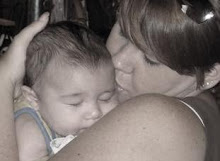Brachial Plexus Injury - Erb's Palsy
(FYI....Hunter has the neuropraxia injury)
What are Brachial Plexus Injuries?
The brachial plexus is a network of nerves that conducts signals from the spine to the shoulder, arm, and hand. Brachial plexus injuries are caused by damage to those nerves. Symptoms may include a limp or paralyzed arm, lack of muscle control in the arm, hand, or wrist, and lack of feeling or sensation in the arm or hand. Although injuries can occur at any time, many brachial plexus injuries happen during birth: the baby's shoulders may become impacted during the birth process causing the brachial plexus nerves to stretch or tear.
There are four types of brachial plexus injuries:
Avulsion: the most severe type, in which the nerve is torn from the spine.
Rupture: in which the nerve is torn but not at the spinal attachment.
Neuroma: in which the nerve has tried to heal itself but scar tissue has grown around the injury, putting pressure on the injured nerve and preventing the nerve from conducting signals to the muscles.
Neuropraxia: or stretch, in which the nerve has been damaged but not torn. This is the most common type of brachial plexus injury.
Is there any treatment?
Some brachial plexus injuries may heal without treatment. Many children improve or recover by 3 to 4 months of age. Treatment for brachial plexus injuries includes occupational or physical therapy and, in some cases, surgery.
What is the prognosis?
The site and type of brachial plexus injury determine the prognosis. For avulsion and rupture injuries there is no potential for recovery unless surgical reconnection is made in a timely manner. For neuroma and neuropraxia injuries the potential for recovery varies. Most patients with neuropraxia injuries recover spontaneously with a 90-100% return of function.
Sunday, February 3, 2008
Subscribe to:
Post Comments (Atom)






No comments:
Post a Comment